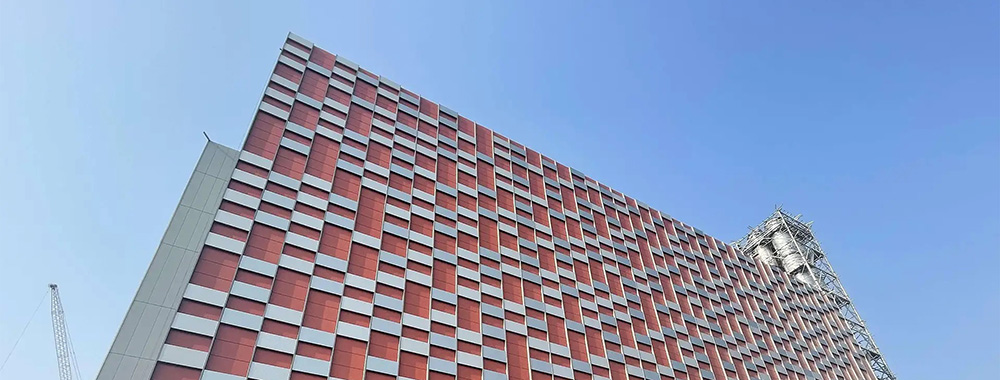
Search...
With the rapid development of science and technology and the popularization of environmental protection concepts, the construction industry is experiencing an unprecedented green revolution. With its unique charm and potential, photovoltaic building integration technology is rapidly emerging as a new trend leading this revolution. It not only changes our traditional understanding of architecture, but also creates a greener and more sustainable future for us.

1. Photovoltaic building integration: concept and basic principles
Photovoltaic building integration, referred to as BIPV, is an innovative model that combines photovoltaic power generation technology with architectural design, construction and operation. It uses photovoltaic panels as part of the building materials and directly integrates them into the exterior walls, roofs or windows of the building to achieve efficient energy utilization and green buildings. The emergence of this technology not only improves the energy efficiency of buildings, but also gives buildings new aesthetic value.
2. The perfect integration of green energy and architectural aesthetics
One of the biggest features of photovoltaic building integration is that it can perfectly integrate green energy with architectural aesthetics. Traditional photovoltaic panels are often regarded as cold and monotonous industrial products, which are difficult to coordinate with diverse architectural styles. However, with the continuous advancement of photovoltaic technology, modern photovoltaic panels can already achieve diversified appearance designs. They can present different colors, textures and shapes, and can even imitate the appearance and texture of traditional building materials. This enables photovoltaic panels to better integrate into the overall style of the building, achieving the harmonious unity of green energy and architectural aesthetics.
3. The dual boost of cost reduction and policy promotion
The popularization of photovoltaic building integration also benefits from the continuous reduction of costs and the strong promotion of policies. With the improvement of the photovoltaic industry chain and the expansion of production scale, the manufacturing cost of photovoltaic panels has decreased year by year, making its application in the construction field more economical and feasible. At the same time, governments of various countries are also actively introducing relevant policies to encourage and support the development of photovoltaic building integration. These policies include tax incentives, subsidy support, loan discounts, etc., which provide strong policy guarantees for the promotion of photovoltaic building integration.
4. Technological innovation leads the rapid development of the industry
Technological innovation is one of the key factors in promoting the development of photovoltaic building integration. In recent years, many innovative achievements have emerged in the field of photovoltaic technology, providing strong technical support for photovoltaic building integration. For example, new photovoltaic materials have higher photoelectric conversion efficiency and longer service life; intelligent control systems can realize automatic adjustment and optimized operation of photovoltaic systems; wireless transmission and Internet of Things technologies make the monitoring and management of photovoltaic systems more convenient and efficient. The application of these new technologies not only enhances the performance and quality of photovoltaic building integration systems, but also reduces maintenance costs and usage complexity.
5. Application Cases and Broad Prospects
The application of photovoltaic building integration has spread all over the world, involving commercial buildings, residential buildings, public facilities and other fields. In the field of commercial buildings, photovoltaic building integration provides clean energy supply for shopping malls, office buildings, etc., reduces operating costs and enhances corporate image. In the residential field, solar building integration provides residents with a reliable source of electricity, reduces dependence on traditional power grids, and reduces electricity bills. In the field of public facilities, photovoltaic building integration provides sustainable energy solutions for parks, schools, etc., and contributes to the green development of cities.
With the continuous advancement of technology and the continuous expansion of the market, the application prospects of photovoltaic building integration will be broader. In the future, we can foresee that more buildings will adopt photovoltaic building integration technology to achieve energy self-sufficiency and environmental sustainable development. At the same time, with the further innovation and improvement of photovoltaic technology, the performance and quality of photovoltaic building integration will be further improved, creating a more comfortable, convenient and environmentally friendly living and working environment for people.
6. Industry Challenges and Future Development
Although solar building integration has shown great potential and broad prospects, we also need to seriously deal with the challenges it faces. Unified technical standards, professional installation and maintenance, and the popularity of market awareness are all factors that limit its further development. Therefore, we need to strengthen technical research and development, improve relevant standards, improve installation and maintenance levels, and strengthen publicity and education to improve the public's awareness and acceptance of photovoltaic building integration.
In the future, with the continuous breakthrough of technology and the gradual maturity of the market, photovoltaic building integration is expected to occupy a more important position in the field of construction. It is not only a key component of the green transformation of the construction industry, but also an important driving force for promoting human society to move towards sustainable development. We have reason to believe that in the near future, photovoltaic building integration will become the mainstream trend in the construction field, creating a greener and better future for us.
In short, photovoltaic building integration, as a new trend in the future construction field, is leading the green transformation of the construction industry with its unique advantages. Let us join hands to jointly promote the popularization and development of photovoltaic building integration and embrace a greener and better future.